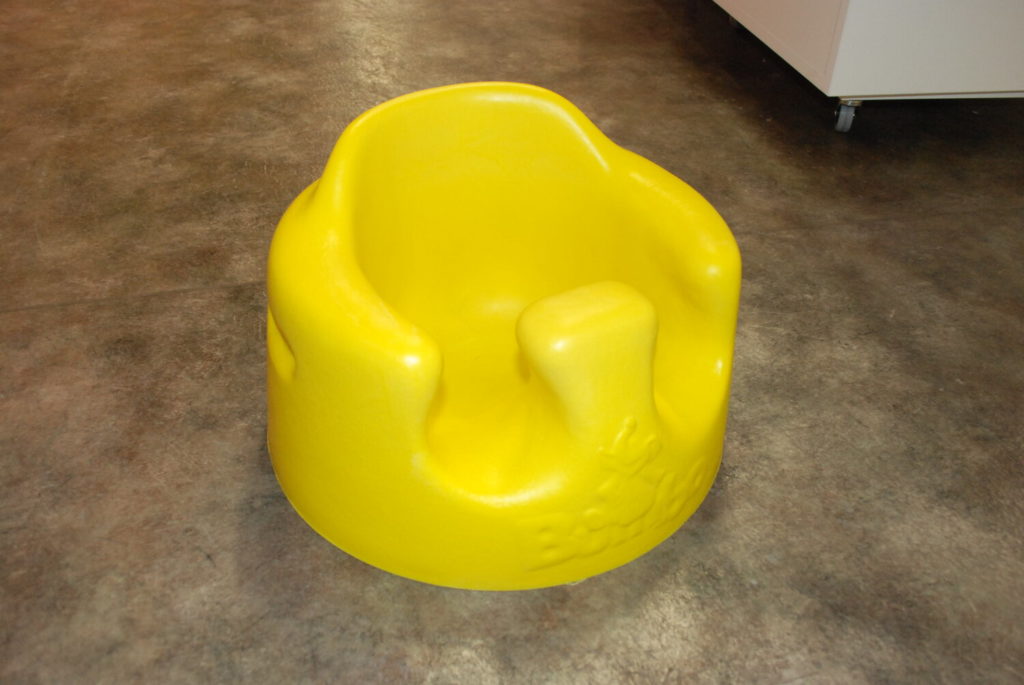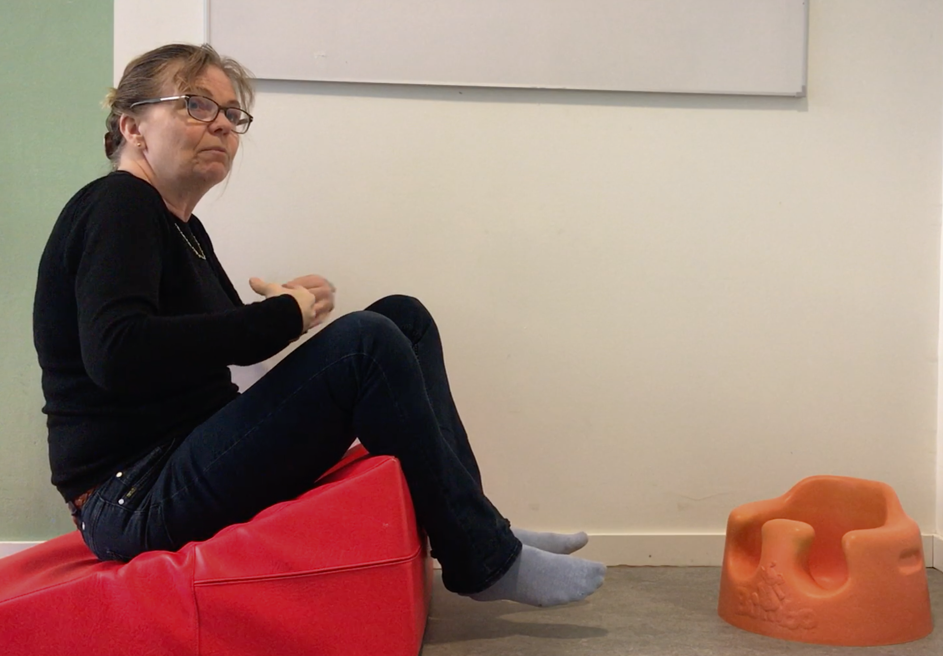At Learn to Move, we advise against using the Bumbo seat, as it can have negative effects on the child’s development. Bumbo seats are designed in a way that prevents the child from learning to sit with a straight back. When the child sits in a chair where it is supposed to hold up its head on its own, the back should be straight. In chairs where it is not expected to hold up the head itself but to rest, the child can lean back. The problem with the Bumbo is that while the child is expected to hold up its head, the design of the Bumbo seat prevents the child from sitting with a straight back and neck, which is normal – the back is normally a strong ‘pillar’. The seat in the Bumbo chair leans backward; it is not flat. The pelvis tilts backward, the back becomes rounded, and when the back is rounded, it becomes weak. It is impossible to learn balance in this position because you ‘fall backward’. Often, the child leans the head or the whole body to one side. A flat seat creates conditions for the child to have a good pelvic position and a posture where the eyes, neck, and vestibular system collaborate to program a fine posture with a straight back, activation of back muscles, and eyes in a horizontal position. In the Bumbo chair, the child either has to perform a “sit-up” using abdominal muscles or collapse with a rounded back.
Many children who sit in Bumbo chairs become confused, and when they later try to sit on the floor, they have poor posture and weak muscles. They can’t balance. That’s why it’s better to put the child in a high chair before they learn to sit on the floor. In the high chair, you need to provide side support and back support to the waist from the beginning. The child learns to sit upright and practices moving forward and backward to maintain a straight position. Eventually, the child learns side-to-side balance, and finally, it learns backward balance.

